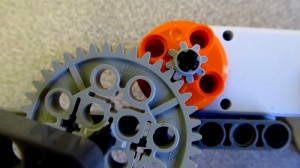 Engineering is the process of designing of solutions to human problems. Engineers apply ingenuity in devising novel solutions, using expert knowledge of the properties of materials and systems to model the behavior of the design.
Engineering is the process of designing of solutions to human problems. Engineers apply ingenuity in devising novel solutions, using expert knowledge of the properties of materials and systems to model the behavior of the design.
In ancient and medieval times engineering was primarily concerned with the design of military fortifications and weapons (engines of war) from ingeniare ‘contrive, devise’. Indeed, the first engineering school in the United States was West Point Military Academy. Civil engineering, which involves the design of roads, bridges, and dams, was the first non-military field, established as a discipline in the mid 1700’s. Later major fields of engineering include mechanical engineering, electrical engineering, chemical engineering, as well as newer fields such as biomedical engineering and software engineering. Today, there are dozens of hybrid fields, such as bioinformatics, human factors engineering, and many others.
Most engineering models are mathematical in nature. Examples include include the equations for design of a low-pass filter (in electronics), or the forces on a beam in structural engineering.


In the case of software engineering, such models include algorithms such as a bubble-sort, or data structures such as simply-linked lists.
Engineering design also involves limiting factors, or constraints, such as cost, time, available technologies, and aesthetics.

- Ordering food for a party based upon a model of the expected food consumption of a typical guest. Constraints might include the available types of food, the available budget, the time available,and the food preferences of the guests.
- Choosing what time to leave for work based upon a model of how long the expected travel time is.
The design of robotics systems is a mixture of mechanical engineering and software engineering. In designing LEGO robots, a young engineer will learn to understand mechanical concepts such as gear ratios, torque, cams, and levers, and computer science concepts such as loops, conditionals, polling, and variables. These concepts are then combined with ingenuity and art to devise a robotic system which can perform a useful task, whether for work or for amusement.
See also What is technology? and What is the difference between engineering and technology?
Jonathan Dietz
Latest posts by Jonathan Dietz (see all)
- Challenges in K-12 engineering education: Lessons from Massachusetts - 18 January 2015
- What is the difference between engineering and technology? - 18 November 2014
- What is technology? - 11 November 2014
- What is engineering? - 6 November 2014
- Learning Dimensions: Another way to assess - 6 November 2014


